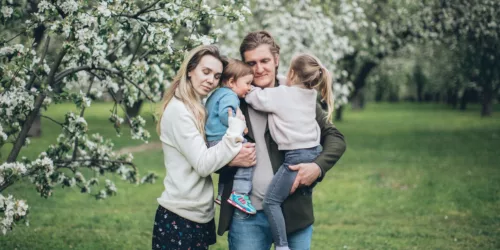The Benefits of Pranayama Breathing Exercises

Breathing is an essential part of life, and when done with intention, it can provide remarkable benefits. Pranayama breathing exercises are a powerful practice for restoring physical and mental health.
Through this ancient technique, practitioners can access a deep level of relaxation while unlocking the potential of their bodies and minds.
From reducing stress levels to improving blood pressure and lung function, the benefits of pranayama are extensive and far-reaching.
In this article we will explore what pranayama is, its various types, and the incredible health benefits that come from practicing these breath exercises.
Key Takeaways
- Pranayama breathing exercises can decrease stress levels and anxiety.
- These exercises have been shown to improve sleep quality and reduce high blood pressure.
- Pranayama can enhance cognitive function, including executive function, working memory, and reasoning skills.
- It has been found to reduce cravings, particularly in individuals trying to quit smoking.
What Is Pranayama
Pranayama is an ancient practice of controlling breath to connect the body and mind, with many physiological healing benefits. It is derived from two Sanskrit words – prana meaning life force, and ayama meaning expansion or extension. The goal of this breathing technique is to harmonize the body and mind while providing a range of physical and mental health benefits.
There are various types of pranayama such as Bhastrika pranayama (bellow breath), Kapal Bhati pranayama (skull shining technique), Nadi Shodhan pranayama (alternate nostril technique) and Bhramari pranayama (bee breath). These breathing exercises can help reduce stress levels, anxiety, high blood pressure, cravings for smoking and improve sleep quality. It can also enhance cognitive function, lung capacity, respiratory muscle strength and mindfulness.
Before starting a pranayama practice, it is recommended to consult with a doctor. With time, one should gradually increase the intensity of practice for optimal results. Pranayama has been studied in various scientific journals, demonstrating positive effects on brain correlates, cardiovascular parameters, and perceived stress.
Physical Benefits of Pranayama
Pranayama has been linked to reducing stress levels and anxiety, improving sleep quality, and lowering high blood pressure. This ancient practice of controlling breath is thought to connect the body and mind for physiological healing benefits.
Different breathing techniques involved in pranayama have been associated with short-term reduction in cigarette cravings and provide stress relief through mindfulness. Some popular techniques used in this practice include breath of fire pranayama, pranayama yoga breathing, cooling breath pranayama, abdominal breathing pranayama, alternate nostril breathing pranayama, ayurvedic breathing exercises pranayama, and belly breathing pranayama.
Pranayama can be used as a complementary practice for overall physical and emotional health and for managing specific conditions like period cramps or PMS symptoms. However, it is important to consult with a doctor before starting a practice since it involves regulating the inner force or ‘prana’.
Moving on from physical benefits, let us explore how pranayama affects cognitive performance.
Cognitive Benefits of Pranayama
Practicing pranayama has been linked to improved executive function, working memory, cognitive flexibility, reasoning skills, and reaction time. Pranayama is the ancient practice of controlling the breath through different breathing techniques that connect the body and mind. This offers physiological healing benefits, helping to reduce stress levels and anxiety while also improving sleep quality. Research shows that it can enhance various aspects of cognitive performance as well.
Kapalabhati pranayama breathing is one technique used for this purpose which involves a part-breath pattern of inhalation and exhalation. Alternate breathing or alternate nose breathing (Anuloma Viloma) is another type of pranayama which helps to center the mind by balancing both sides of the brain. Bhastrika pranayama (bellows breath) boosts energy levels while bhramari pranayama (bee breath) calms the mind and reduces stress levels.
Studies have indicated that these techniques can improve auditory memory, sensory-motor performance, reasoning skills, and cognitive flexibility. They also reduce perceived stress in individuals with psychological disorders like anxiety or depression. Pranayama can even help manage specific conditions such as period cramps or PMS symptoms when practiced regularly over time.
Pranayama for Reducing Cravings
You can use pranayama to reduce cravings, as it has been shown to decrease cigarette cravings in just 10 minutes of yogic breathing.
Bhastrika pranayama is a technique that boosts energy levels.
Kapal Bhati pranayama is known for detoxifying the body.
Nadi Shodhan pranayama helps center the mind.
Bhramari pranayama calms the mind.
Breath retention pranayama can be used to aid in quitting smoking, and studies have shown short-term reduction in cravings with this practice.
Additionally, breath of fire kundalini yoga pranayama and breath of joy pranayama may help manage specific conditions like period cramps and PMS symptoms.
Pranayama’s ability to reduce stress, anxiety levels, and improve mental focus allows it to be a complementary practice for overall physical and emotional health benefits.
Breathing exercises such as yoga or breath of fire pranayama are beneficial practices that should be incorporated into your lifestyle for improved well-being.
Role of Pranayama in Yoga and Holistic Wellness
Integrating pranayama into your yoga practice can provide a host of holistic wellness benefits. Pranayama is an ancient practice of controlling breath to connect the body and mind, and its techniques offer physiological healing effects. There are many types of pranayama including bhastrika (bellow breath), kapalbhati (skull shining technique), nadi shodhan (alternate nostril technique) and bhramari (bee breath). These breathing exercises have traditional as well as scientifically proven benefits for the mind and body.
For instance, pranayama can help reduce cravings associated with smoking cessation. It increases mindfulness and has been found to improve cognitive function, lung capacity, respiratory muscle strength, decrease stress levels, aggression, anxiety levels, and improve mental focus. Some studies have shown that it also helps manage psychosomatic disorders by integrating the body and mind through breath.
Benefits:
- Physical: Decreases stress levels & anxiety; Improves sleep quality; Reduces high blood pressure; Improves lung function & capacity
- Cognitive: Enhances executive function & sensory-motor performance; Better auditory memory & reaction time
- Holistic: Alleviates negative effects associated with smoking withdrawal; Stress relief & overall physical & emotional health; Manage specific conditions like period cramps & PMS symptoms
Techniques:
- Bhastrika pranayama
- Kapal Bhati pranayama
- Nadi Shodhan pranayama
- Bhramari pranayama
- Breath holding pranayama
- Box breathing pranayama
- Deep breathing pranayama
- Equal breathing pranayama
- Bikram yoga pranayama
- Bikram pranayama
- Breathing ratios in pranayama
Types of Pranayama
There are various types of pranayama, such as bellow breath, skull shining technique, alternate nostril technique, and bee breath. Pranayama breathing techniques are used to harmonize the mind and body with the goal of improved physical and mental health.
Bhastrika pranayama, or bellow breath, helps boost energy levels while Kapal Bhati pranayama is a cleansing practice that detoxifies the body. Nadi Shodhan pranayama is an alternate nostril breathing technique that centers the mind, and Bhramari pranayama, or bee breath, can be used to encourage relaxation.
All types of pranayama have traditional and scientifically proven benefits for overall well-being. Diaphragmatic breathing, in particular, is known for its ability to reduce stress levels and improve sleep quality. Buteyko breathing vs pranayama has been studied in relation to smoking cessation due to its potential role in reducing cravings associated with withdrawal symptoms.
Cleansing breath pranayama has also been found useful for managing psychosomatic disorders involving anxiety and depression by integrating the body and mind through focused attention on the breath. Practicing different types of pranayamas can bring about numerous beneficial health effects for both physical wellness and emotional balance.
Health Benefits of Pranayama
Experience the positive effects of pranayama on cognitive function, lung capacity, and overall mental well-being. Pranayama is an ancient practice that involves controlling breath to connect body and mind while providing physiological healing benefits. It has been found to have positive effects on brain correlates, cardiovascular parameters, and perceived stress.
Here’s what you need to know about the health benefits of pranayamic breathing:
Cognitive Benefits: Pranayama enhances executive functioning, working memory, cognitive flexibility reasoning skills, and reaction time. It also improves auditory memory and sensory-motor performance attributed to stress reduction with increased oxygen uptake.
Reducing Cravings: Pranayama decreases cravings in those trying to quit smoking with just 10 minutes of yogic breathing alleviating negative withdrawal symptoms associated with it.
Yoga & Holistic Wellness: Pranayama plays an important role in trauma-informed yoga practices for physical and emotional health. It can help manage period cramps or PMS symptoms through different breathing techniques for stress relief and overall well-being.
Practicing Pranayama
Before you begin a pranayama practice, it’s important to consult your doctor.
Pranayama harmonizes the mind and body, offering overall well-being benefits that can alleviate symptoms of anxiety, stress, and certain physical conditions. It is a meditative method that focuses on breath awareness and relaxation.
Different practices like dog breathing pranayama, dragon breath pranayama, fast breathing pranayama, guided pranayama breathing, and holding breath pranayama can be used for these effects.
Starting slowly is recommended as intensity should be increased gradually over time. Pranayama can help reduce cravings and support quitting smoking while increasing mindfulness and helping one live in the present moment.
Studies have also demonstrated significant effects on cardiorespiratory functions by improving pulse rate, blood pressure, and respiratory function along with reducing the frequency of attacks.
Therefore, it is essential to research its credibility before practicing to ensure its safe use for maximum benefits.
Is Sacred Geometry Connected to Pranayama Breathing Exercises?
Pranayama breathing exercises and the mystical symbolism of sacred tree share a unique connection within the realm of sacred geometry. Both disciplines emphasize the balance and harmonization of energies, facilitating spiritual growth and well-being. Exploring the intricate patterns of sacred geometry can enhance the effectiveness of Pranayama techniques, allowing practitioners to delve deeper into their practice and experience a heightened sense of transcendence.
Can Pranayama Breathing Exercises Help with Detaching from Someone You Talk to Everyday?
Pranayama breathing exercises can potentially aid in detaching from daily interactions with others. By focusing on the breath, these exercises promote mindfulness and self-awareness, allowing individuals to detach from their emotions and thoughts surrounding someone they talk to every day. With consistent practice, Pranayama may help create a space for inner calmness and perspective, lessening attachment to external relationships.
Frequently Asked Questions on Benefits of Pranayama Breathing Exercises
What Age Group Is Appropriate for Practicing Pranayama?
I’m often asked what age group is appropriate for practicing pranayama. The answer is, all ages! Pranayama can be a powerful practice for people of any age, as long as it’s practiced safely and with guidance from an experienced teacher. From youngsters to seniors, breathwork can bring balance and harmony to the body and mind.
Are There Any Risks Associated With Pranayama?
Yes, there are some risks associated with pranayama. It can cause dizziness or lightheadedness due to changes in blood pressure and oxygen levels. Over-breathing can also lead to hyperventilation and anxiety if done incorrectly. It’s important to practice pranayama safely under the supervision of an experienced teacher.
How Long Should I Practice Pranayama for Optimal Results?
For optimal results, I recommend practicing pranayama daily for at least 10-15 minutes. With regular practice, you’ll be amazed by the deep relaxation and improved wellbeing you experience!
What Is the Best Time of Day to Practice Pranayama?
The best time to practice pranayama is in the morning or evening, when the mind is more relaxed and focused. This will help create a deeper connection with your breath and maximize the benefits of the practice.
How Can I Make Pranayama Part of My Daily Routine?
Making pranayama part of my daily routine starts with understanding the techniques and benefits. I can begin by setting aside a few minutes each day to practice mindful breathing, gradually increasing intensity over time. With regular practice, I will experience improved mental clarity and physical wellbeing.
Conclusion on The Benefits of Pranayama Breathing Exercises
I’ve investigated the truth of pranayama breathing exercises and found that they have numerous physical and cognitive benefits.
From reducing anxiety to improving lung function, pranayama can be a great addition to any holistic wellness practice.
With its various types, it can help reduce cravings and improve overall health.
Pranayama has been proven to help people maintain their mental and physical wellbeing, making it an invaluable tool for anyone looking for a healthier lifestyle.






